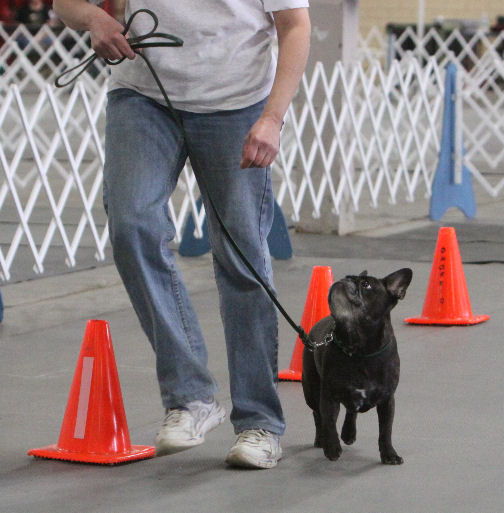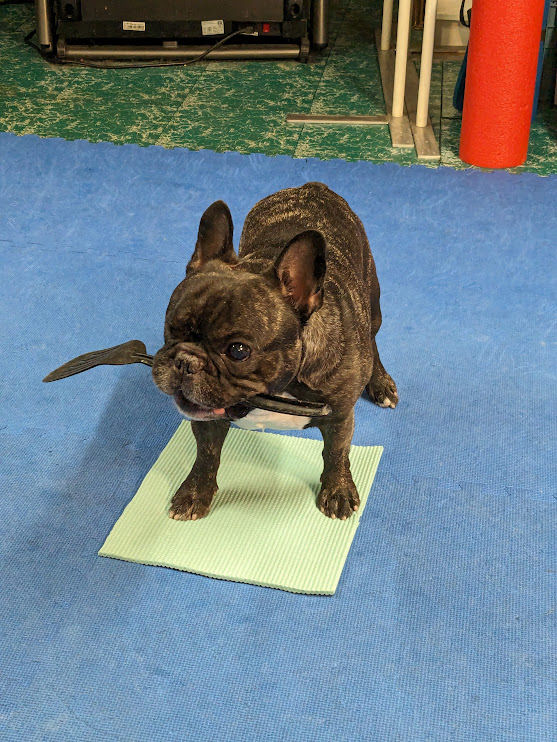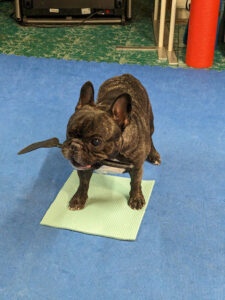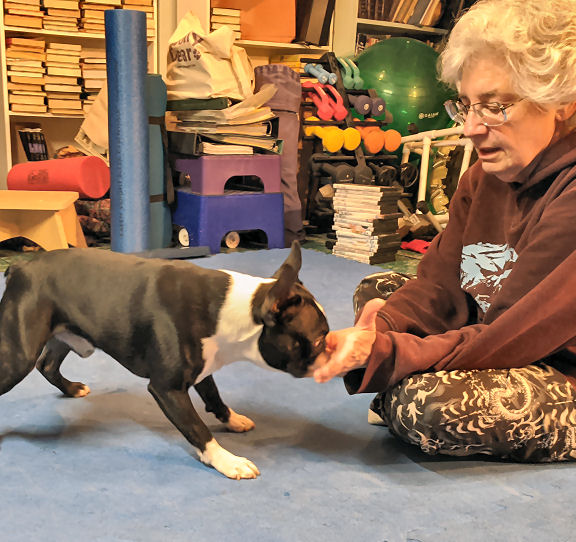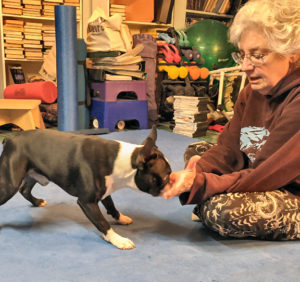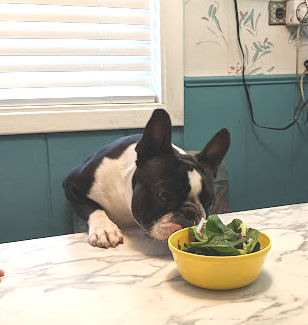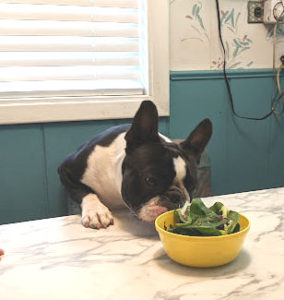Both dogs and people are creatures of habit. To keep training games fun for both of you, it’s a good idea to shake up your dog training routine.
Even if you’re working on a specific behavior, you can find ways to make it different and more interesting. Simple variations can change the dynamic.
Always the same
In AKC Novice Obedience competition there are exactly eight exercises. It’s the same eight behaviors, in the exact same order, in every single AKC Obedience Competition. It doesn’t change, the order doesn’t vary. It is what it is. And in our classes, we never, ever practice or teach it that way.
Dogs aren’t stupid. If you practice the same thing the same way every time, they don’t just learn the routine. They know what’s coming and jump ahead to the end. They’re awesome that way – wanting to save you the time and trouble of doing all the fussy in-between bits.
In competition, that’s a problem. It’s all the fussy bits that matter.
For example
Let’s say you’re doing the Figure 8 heeling. If you’ve only practiced as it’s done in competition, your dog knows exactly how it works. So your dog isn’t actually heeling, they’re doing a Figure 8 pattern. When the judge says “Halt!,” if your dog’s not watching you, they may be merrily heeling along and not notice you stopped. Until it’s too late and the judge is deducting points.
It’s easily fixed. Instead of just two cones to heel around in practice, use three. Or four. Or five. Go any which way, without a plan, and keep your dog’s attention. It’s more interesting for both of you. And it improves your heeling.
Just for fun
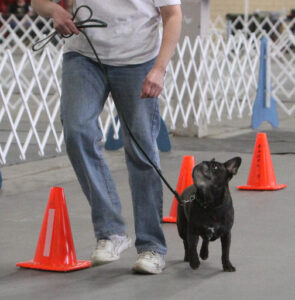
Even if you never intend to enter an obedience competition, the around-the-cones heeling, or loose-lead walking, is good practice. We call it “noodling” and you just walk randomly in circles, zig-zags, and loop-de-loops. You can even throw in a few backward and side steps.
If you’re out and about, put some interest in your walks. Use trees to do Figure 8s around. Or, if you’re an urban dweller, street lights or garbage cans work, too. The point is to instill some variety, add some interest, and keep both of you from falling into a rut.
As Ralph Waldo Emerson said: “A foolish consistency is the hobgoblin of little minds, adored by little statesmen and philosophers and divines. With consistency a great soul has simply nothing to do.”
Be unpredictable in your dog training routine. It’ll be more fun for you and your dog.

